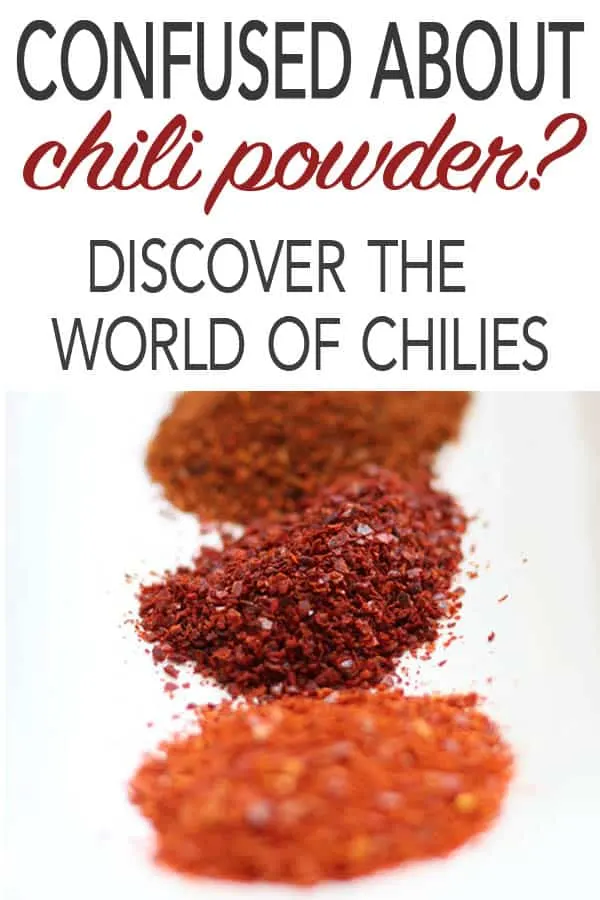This post contains affiliate links for products we love. Fusion Craftiness earns a small commission on these links at no cost to you.
A home cooks guide to chili powders, the background, history and characteristics. Included is a list of substitutions for chili powders and a recipe for the chili powder blend Americans use most.

Chili Powder Background
Chili powder is your friend in the kitchen but often misunderstood by new cooks. Grabbing the wrong chili powder can ruin, or at least greatly change the outcome of a recipe. Not all chili powders are created equal.
In the U.S., chili powder in the spice aisle is actually a blend, usually consisting of cayenne, other chili powder, cumin, garlic, oregano and salt. It is most often used in Mexican dishes or in Tex-Mex recipes. It has a distinctive flavor profile that would not bode well in Indian, Korean or Thai cooking. Your curries could taste more like Tex-Mex than Asian.
For the rest of the World, chili powder is dried, pulverized fruit of chili plants. This chili powder is not blended with other spices. This makes the chili powder more versatile.
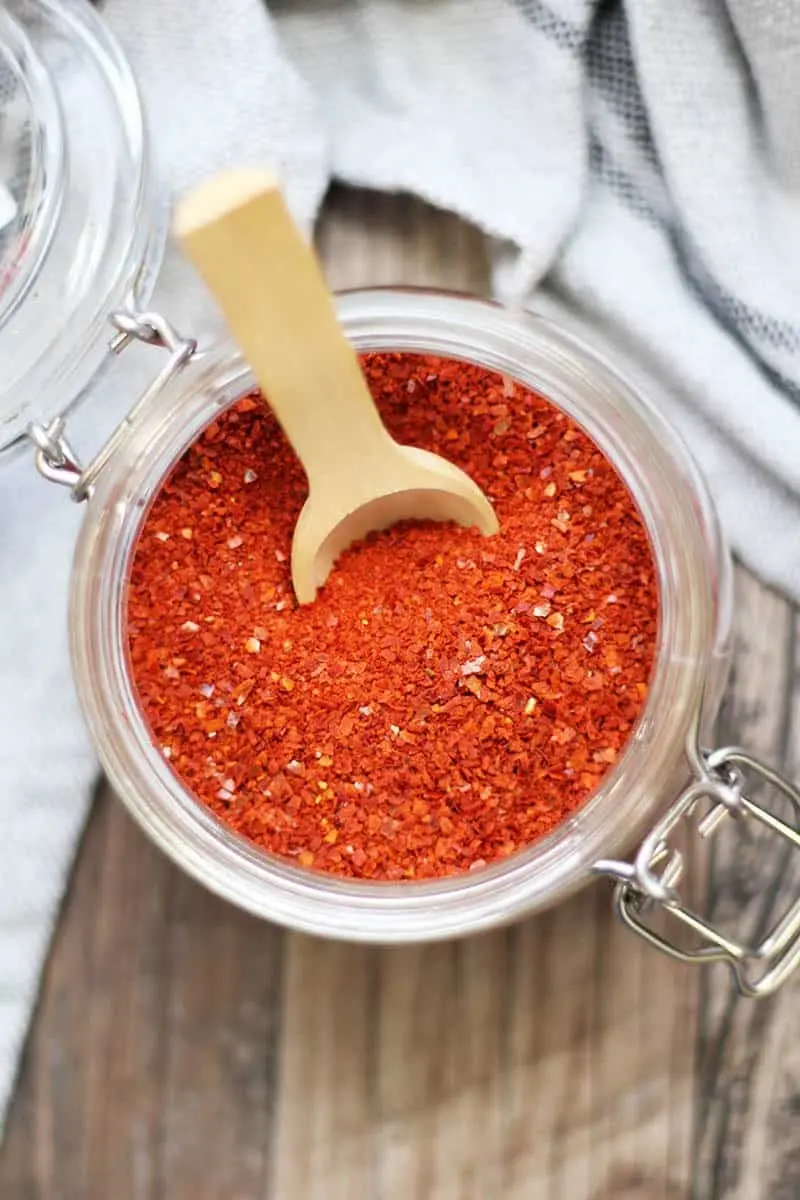
Some are fried dry or smoked like the jalapeño which takes on the name of chipotle when smoked. Placing dried chilis in a blender or food processor will yield you some fresh chili powder which should stay shelf stable for about 6 months in a cool dark place,or longer in the fridge.
Each variety of chilis have a unique flavor and heat profile which is measured in Scoville units. The Scoville scale ranges from 0-16,000,000. A sweet bell pepper rates 0 while pure capsaicin rates at a toxic 16,000,000. A jalapeño varies from 2,500-5,000.
Besides the chili powder blend, cayenne and paprika are common in US markets. Cayenne rates between 30,000-50,000 Scoville units and paprika comes in around 1,000. It is important to not get these two mixed up!
How to make chili powder from dried chilies?
Cut open the dried chili. Remove stem and seeds. Place in a food processor and process until a powder forms. Store in a cool dark place or the fridge.
Chili Powder History
Chilis were first cultivated in South America where Christopher Columbus first made contact with this new fruit. Trade ensued and the pepper quickly made its way around the world. Every culture that was exposed to this exotic prize quickly adapted it into their horticulture and cuisine. Africa, Asia, Europe…no civilization was spared. Varieties were selected and honed and each region propagated their favorites. Now we have Hungarian and Spanish Paprika, Thai chilis, Korean chilis, African chilis and so on. Paprika has become so entrenched into Hungarian culture that they have salt and paprika shakers at the table, skipping black pepper all together.
Chili Pepper Characteristics
Below is a list of chili peppers I have on hand. Ironically, I rarely use the U.S. blend. My favorites are smoked paprika, Korean chili pepper (gochugaru) and Syrian chili pepper (Aleppo).

Paprika
SWEET
Robust aroma, smokey and peppery taste, mild heat
SMOKED
Smokey aroma, Smokey and peppery taste, moderate heat
HUNGARIAN
Robust aroma, peppery taste, moderate heat
Cayenne
Pungent aroma, peppery taste, hot
American Chili Powder
Complex savory aroma, cumin taste, mild heat
Syrian/ Aleppo
Smokey aroma, smokey and robust taste, moderate heat
Korean/ Gochugaru
Robust peppery aroma, peppery taste, mild heat
Kashmiri
Smoky, bright red, moderate heat
Substitutes for chili powder
Below are some substitutions if you find yourself without chili powder while making a recipe or if you can’t find a specific chili powder in your local market.
American Chili Powder blend
If you are making a recipe that calls for chili powder and you discover you don’t have any on hand, you may substitute Ancho chili powder which is made from poblano chilies. You may also use chipotle chili powder which is made from smoked jalapeños that have been dried.
If you want to make your own Ameican chili powder blend, see the recipe at the end of this post to learn how to make chili powder from scratch.
Chili powder substitute for medium heat
Gochujang is a Korean chili paste made from gochugaru chili powder. It has a medium heat profile and a slightly smokey flavor.
Harissa Paste is a condiment from North Africa. It is a mixture of spices and roasted red bell peppers that is a good substitute for medium to high heat dishes.
Chili Powder Substitute For High Heat
Sambal is a chili sauce made from a mixture of a variety of chili peppers with other ingredients including shrimp paste, shallots, garlic, ginger, scallion, palm sugar, and lime juice. It has a high heat profile so start off with small amounts first.
Substitute For Paprika
Paprika is a mild chili powder so you will need to substitute a similar chili powder with low Scoville units. Ancho chili powder made from dried poblanos is a good choice. In a pinch you may also substitute red chili flakes.
Other chili powders with similar heat include gochugaru, Aleppo and Kashmiri Chili powder.
Substitute for Cayenne
Cayenne has a high heat profile. You can either substitute a medium heat chili powder and increase the amount you use or substitute a hot chili sauce. Some popular chili sauces include Sriracha (Rooster Sauce), Tobasco, Cholula and Sambal sauce.
Did you make this recipe? Don’t forget to rate the recipe and comment below! Take a picture and tag us @FusionCraftiness #FusionCraftiness on Instagram for a chance to be featured in our Insta Stories:)
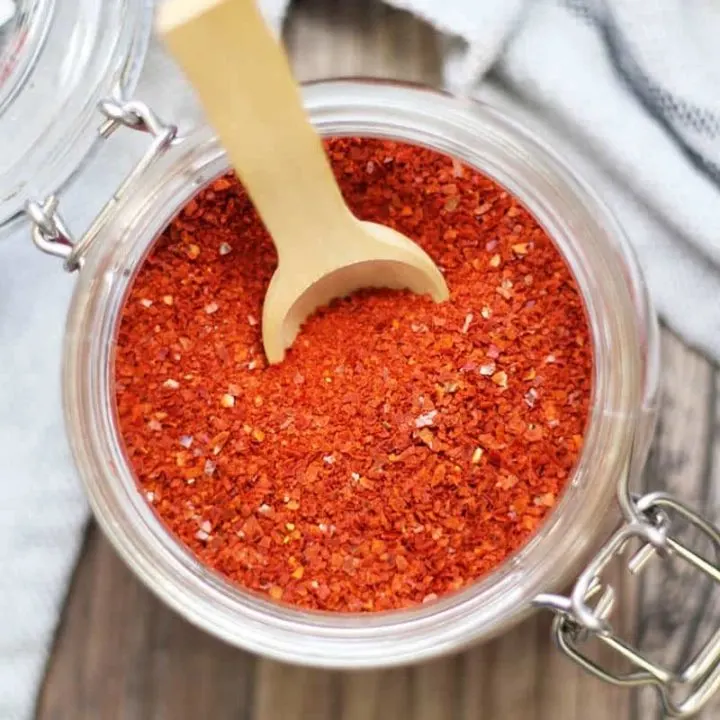
Chili Powder Recipe
A homemade chili powder blend recipe designed for Mexican and TexMex cooking.
Ingredients
- 3 dried Ancho chilies
- 2 Arbol or Pasilla chillies
- 2 tsp cumin
- 1 tsp garlic powder
- 1 tsp onion powder
- 1 tsp dried organo
- 1/2 tsp salt
Instructions
- In a hot skillet over medium heat, toast the chilies until they develop a smoky aroma, be careful not to burn. Turn frequently.
- Let chilies cool, remove stem and seeds.
- In the bowl of a food processor add the chilies with the remaining ingredients. Process until a powder forms.
- Store in an airtight container in a cool dark place. You may also keep this in the fridge.
Notes
Think of this recipe as a guideline. You may use different types of dried chilies or even just use the paprika and cayenne from your cupboard. Try experimenting with different herbs and spices too. In a canning jar, they make great gifts!
Recommended Products
As an Amazon Associate and member of other affiliate programs, I earn from qualifying purchases.
-
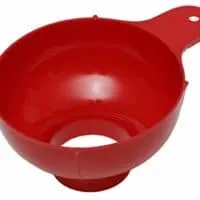 Canning Funnel, Red Plastic, by VICTORIO VKP1001
Canning Funnel, Red Plastic, by VICTORIO VKP1001 -
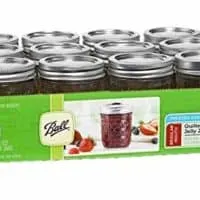 Ball Jar Quilted Crystal Jelly (Case of 12), 8 oz
Ball Jar Quilted Crystal Jelly (Case of 12), 8 oz -
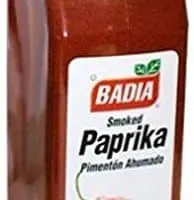 Badia Smoked Paprika 16 Oz (1)
Badia Smoked Paprika 16 Oz (1) -
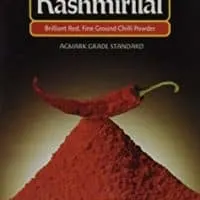 Everest Kashmiri Lal Ground Spice Used in Dishes for Its Hot Taste and Reddish Color (Box, 100 Gms)
Everest Kashmiri Lal Ground Spice Used in Dishes for Its Hot Taste and Reddish Color (Box, 100 Gms) -
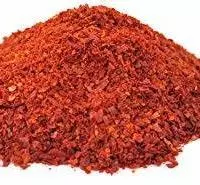 The Spice Way - Premium Aleppo Pepper |4 oz.| Crushed Aleppo Pepper Flakes (Halaby Pepper/Pul Biber/Marash Pepper/Aleppo Chili Flakes) Popular in Turkish and Middle Eastern/Mediterranean cooking
The Spice Way - Premium Aleppo Pepper |4 oz.| Crushed Aleppo Pepper Flakes (Halaby Pepper/Pul Biber/Marash Pepper/Aleppo Chili Flakes) Popular in Turkish and Middle Eastern/Mediterranean cooking -
 Tae-kyung Korean Red Chili Pepper Flakes Powder Gochugaru, 1 Lb
Tae-kyung Korean Red Chili Pepper Flakes Powder Gochugaru, 1 Lb -
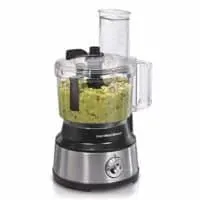 Hamilton Beach 10-Cup Food Processor & Vegetable Chopper with Bowl Scraper, Stainless Steel (70730)
Hamilton Beach 10-Cup Food Processor & Vegetable Chopper with Bowl Scraper, Stainless Steel (70730) -
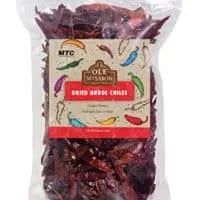 Chilis De Arbol 4 oz Spicy Heat Natural Whole Dried Peppers For Mexican Recipes
Chilis De Arbol 4 oz Spicy Heat Natural Whole Dried Peppers For Mexican Recipes -
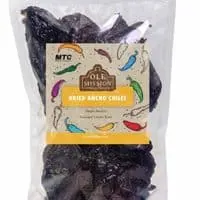 Dried Ancho Chiles Peppers 4 oz, Great For Sauce, Chili, Stews, Soups, Mole, Tamales, Salsa and Mexican Recipes By Ole Mission
Dried Ancho Chiles Peppers 4 oz, Great For Sauce, Chili, Stews, Soups, Mole, Tamales, Salsa and Mexican Recipes By Ole Mission
Nutrition Information:
Yield: 16 Serving Size: 1Amount Per Serving: Calories: 3Total Fat: 0gSaturated Fat: 0gTrans Fat: 0gUnsaturated Fat: 0gCholesterol: 0mgSodium: 74mgCarbohydrates: 1gFiber: 0gSugar: 0gProtein: 0g
